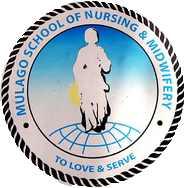Introduction:
Enzymes are biological catalysts that accelerate chemical reactions by lowering the activation energy. Enzymes are proteins consisting of one or more polypeptide chains. Enzymes have an active site that provides a unique chemical environment, made up of certain amino acid R groups (residues). This unique environment is well-suited to convert particular chemical reactants for that enzyme, called substrates, into unstable intermediates called transition states. Enzymes and substrates are thought to bind with an induced fit, which means that enzymes and substrates undergo slight conformational adjustments upon substrate contact, leading to binding. Enzymes bind to substrates and catalyze reactions in four different ways: bringing substrates together in an optimal orientation, compromising the bond structures of substrates so that bonds can be more easily broken, providing optimal environmental conditions for a reaction to occur, or participating directly in their chemical reaction by forming transient covalent bonds with the substrates.
Enzymes
A substance that helps a chemical reaction to occur is a catalyst, and the special molecules that catalyze biochemical reactions are called enzymes. Almost all enzymes are proteins, made up of chains of amino acids, and they perform the critical task of lowering the activation energies of chemical reactions inside the cell. Enzymes do this by binding to the reactant molecules, and holding them in such a way as to make the chemical bond-breaking and bond-forming processes take place more readily. It is important to remember that enzymes don’t change the ∆G of a reaction. In other words, they don’t change whether a reaction is exergonic (spontaneous) or endergonic. This is because they don’t change the free energy of the reactants or products. They only reduce the activation energy required to reach the transition state.
As a Student, You Will Understand the:
Definitions of enzymes, coenzymes, co-factors, and isozymes; Its Classification of coenzymes; Classification of enzymes /Nomenclature of enzymes; Specificity of enzymes; Principles explaining enzyme action; Mechanisms of catalysis: How enzymes catalyze reaction; Formation of enzyme substrate complexes; Factor influencing enzyme activity; Factors affecting enzyme reaction rates; Michaelis-Menten Kinetics; Two substrate reactions; Types of enzyme inhibition (competitive, non-competitive, noncompetitive allosteric/ feed-back inhibitors and uncompetitive); Proteolytic enzymes; Regulation of enzyme activity (biosynthesis, compartmentalization, post-translational modification etc.); and finally, Use of enzyme assays in diagnosis of disease: Isoenzymes in medicine, medical application of enzymes: Clinical diagnosis, enzymotherapy, indicators/markers of diseases).
Enzymes are biological catalysts that accelerate chemical reactions by lowering the activation energy. Enzymes are proteins consisting of one or more polypeptide chains. Enzymes have an active site that provides a unique chemical environment, made up of certain amino acid R groups (residues). This unique environment is well-suited to convert particular chemical reactants for that enzyme, called substrates, into unstable intermediates called transition states. Enzymes and substrates are thought to bind with an induced fit, which means that enzymes and substrates undergo slight conformational adjustments upon substrate contact, leading to binding. Enzymes bind to substrates and catalyze reactions in four different ways: bringing substrates together in an optimal orientation, compromising the bond structures of substrates so that bonds can be more easily broken, providing optimal environmental conditions for a reaction to occur, or participating directly in their chemical reaction by forming transient covalent bonds with the substrates.
Enzymes
A substance that helps a chemical reaction to occur is a catalyst, and the special molecules that catalyze biochemical reactions are called enzymes. Almost all enzymes are proteins, made up of chains of amino acids, and they perform the critical task of lowering the activation energies of chemical reactions inside the cell. Enzymes do this by binding to the reactant molecules, and holding them in such a way as to make the chemical bond-breaking and bond-forming processes take place more readily. It is important to remember that enzymes don’t change the ∆G of a reaction. In other words, they don’t change whether a reaction is exergonic (spontaneous) or endergonic. This is because they don’t change the free energy of the reactants or products. They only reduce the activation energy required to reach the transition state.
As a Student, You Will Understand the:
Definitions of enzymes, coenzymes, co-factors, and isozymes; Its Classification of coenzymes; Classification of enzymes /Nomenclature of enzymes; Specificity of enzymes; Principles explaining enzyme action; Mechanisms of catalysis: How enzymes catalyze reaction; Formation of enzyme substrate complexes; Factor influencing enzyme activity; Factors affecting enzyme reaction rates; Michaelis-Menten Kinetics; Two substrate reactions; Types of enzyme inhibition (competitive, non-competitive, noncompetitive allosteric/ feed-back inhibitors and uncompetitive); Proteolytic enzymes; Regulation of enzyme activity (biosynthesis, compartmentalization, post-translational modification etc.); and finally, Use of enzyme assays in diagnosis of disease: Isoenzymes in medicine, medical application of enzymes: Clinical diagnosis, enzymotherapy, indicators/markers of diseases).

